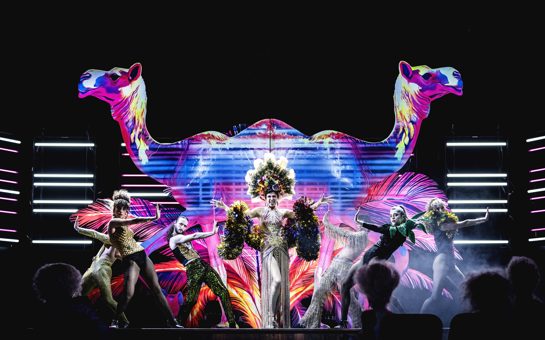- Daniel Catán
La Hija de Rappaccini (Rappaccini’s Daughter) (1983)
- Associated Music Publishers Inc (World)
Opera in two acts; premiered 1994
- 3(pic)+2rec.3(ca).3(bcl).3/4331/timp.2perc/pf.cel.hp/str
- 2perc.hp.2pf
- 3 offstage female voices
- S, Mz, 2T, Bar
- 1 hr 45 min
- Juan Tovar, based on the play by Octavio Paz and the short story by Nathaniel Hawthorne
- Spanish
Programme Note
Catán's setting of Rappaccini's Daughter is based on the Nathaniel Hawthorne story and retold by Mexican Nobel Prize-winning author Octavio Paz. Set during the Italian Renaissance, Rappaccini's Daughter is a multi-layered story that deals not only with the scientific struggle of good and evil, but also with the blurring gray lines created as both good and evil merge.
Cast List
BEATRIZ: Soprano
ISABELA: Mezzo-Soprano
GIOVANNI: Tenor
BAGLIONI: Tenor
RAPPACCINI: Baritone
Tres Voces: Femeninas
Chamber version available
2perc, hp, 2pf
Composer Note
Rappaccini’s Daughter – An opera for the 21st Century
Dr. Rappaccini is a creative spirit, an idealist, a visionary, a revolutionary. He is the very spirit of creation. Without that spirit we are not entirely human. It is what makes us want to stand upright and look up to the sky. Rappaccini represents that which is most precious in human beings and makes them come close to the divine. Galileo, Newton, Einstein, they all were outrageous visionaries.
At the same time, there is something deeply disturbing about this. When we reach the boundaries of human knowledge we stare into the most profound darkness. We look into the abyss and experience the limit of our humanity. Our journey is defined by uncertainty. A quest may lose its direction. A vision can become perverted. An ideal can be made to serve the most horrific and inhumane causes.
These are issues that have concerned us always and continue to be particularly relevant, perhaps more today than ever before. The 20th Century has provided us with more examples than we would ever want. Modern science faces enormous ethical dilemmas when it ventures into areas such as cloning and genetic engineering. A modern geneticist can eradicate certain characteristics of, say, corn, by manipulating its genetic structure. Should he be allowed to do similar things with human beings? How far should he go?
Rappaccini’s final words to Beatriz: "Now you can create the children of gods/ you will travel the world, feared and worshipped, bearers of the future/ you will enjoy eternal life..." could be the words of an visionary prophet. Go forth and multiply! Reproduce in my image. Regrettably, they could also be the words of a perverted mind like Hitler’s.
Rappaccini's Daughter brings up some issues that have more relevance to our world than to 15th Century Padua, for better and also, unfortunately, for worse.
Opera is not only a great art form. It can also be extremely relevant to our society and uniquely suited to deal with some of the most complicated and important issues of our time.
Media
Scores
Features

- Opera Season Highlights 2025-26
- Discover operatic highlights from Wise Music Classical during the 2025-26 season test

 Located in the UK
Located in the UK
 Located in the USA
Located in the USA
 Located in Europe
Located in Europe
